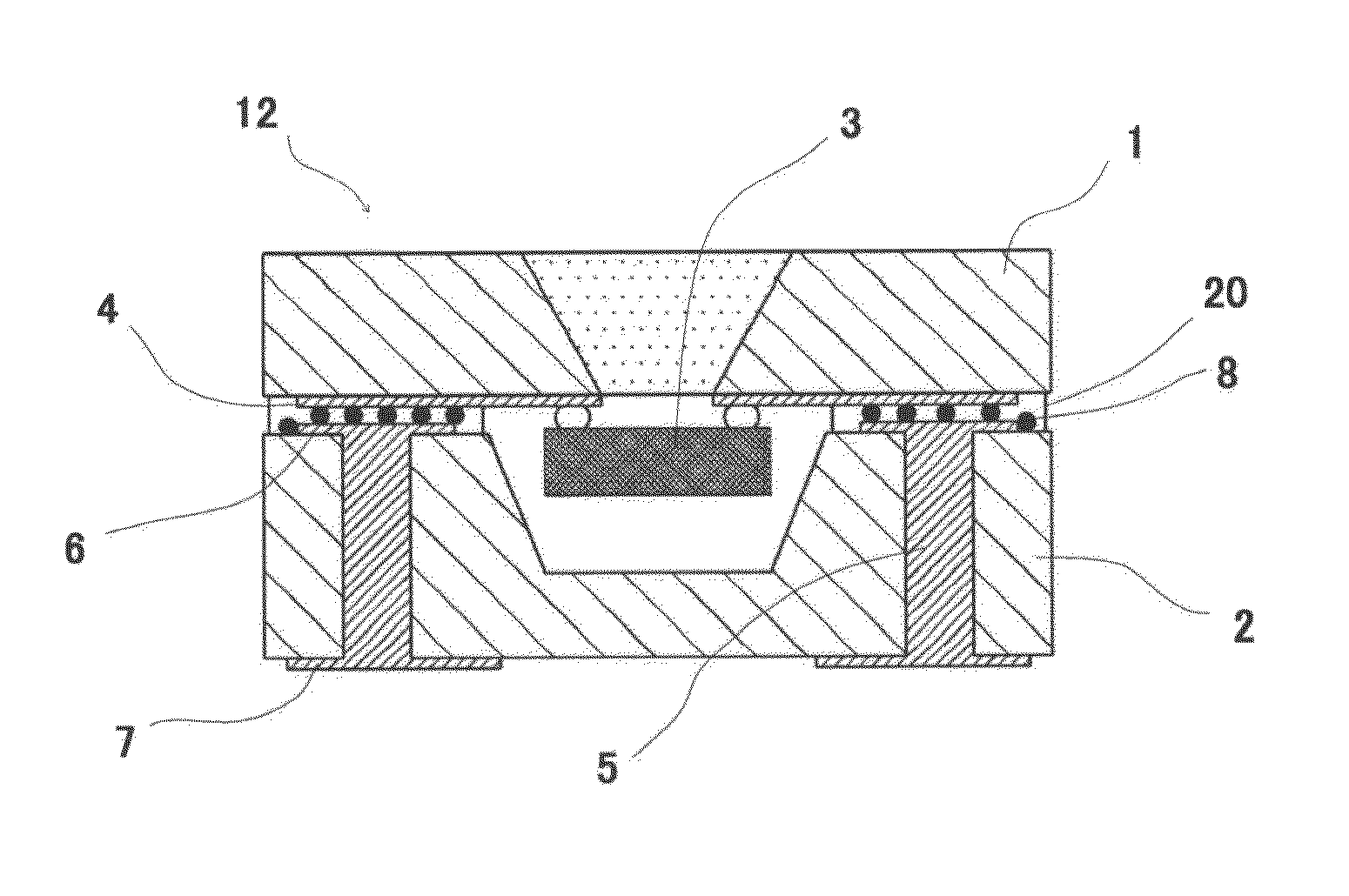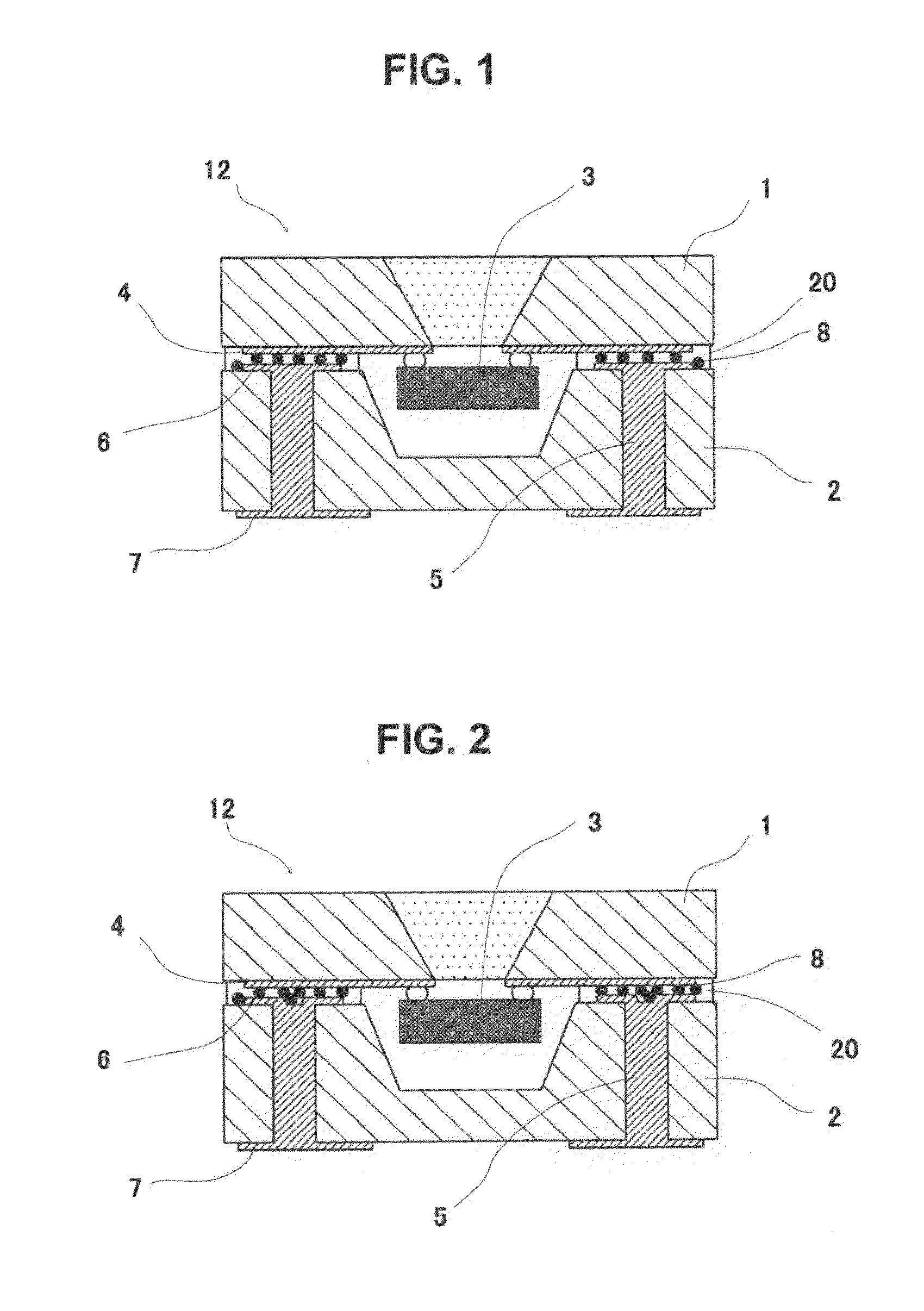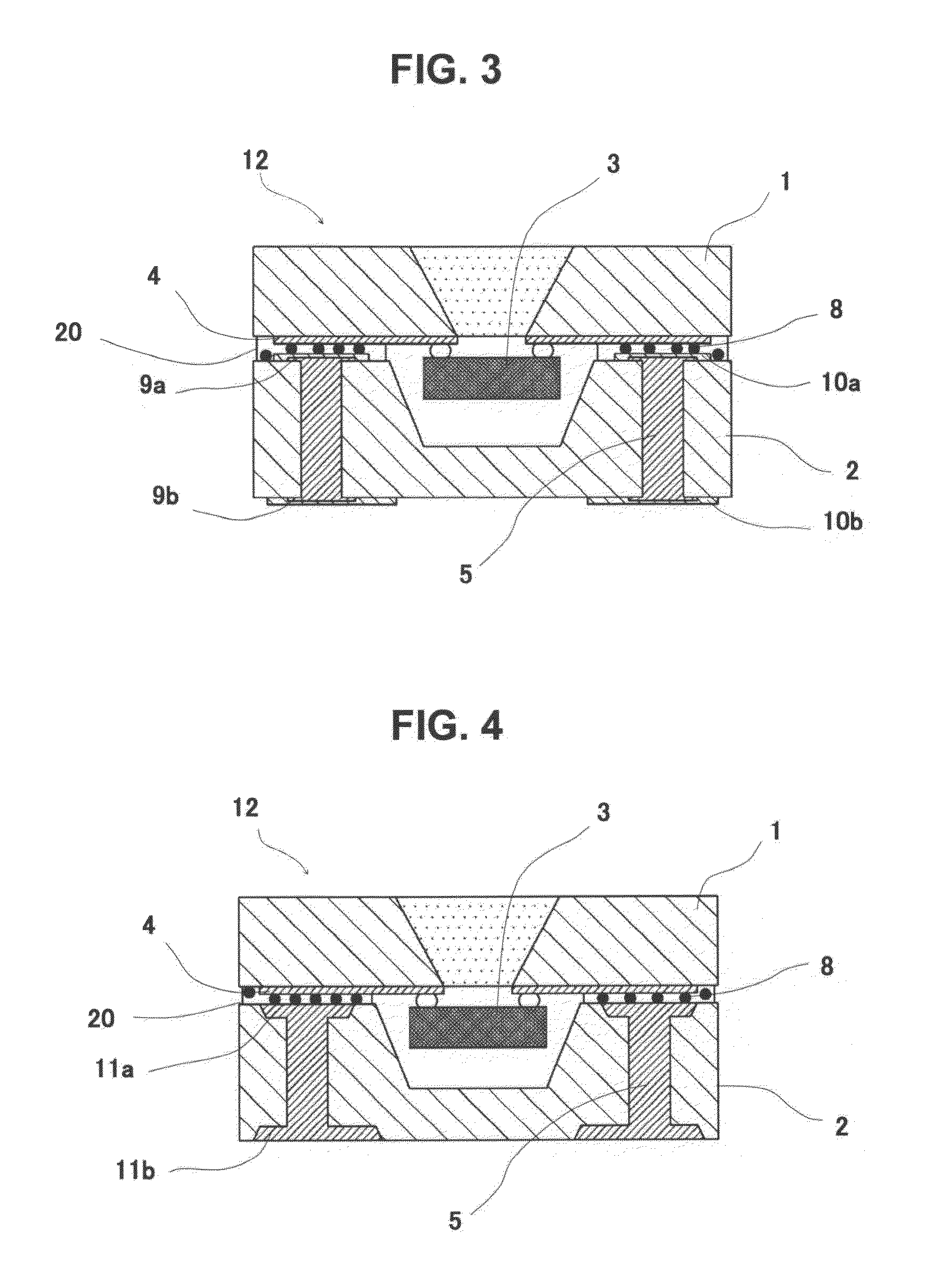Optical sensor device
a sensor device and optical sensor technology, applied in the field of optical sensor devices, can solve the problems of low efficiency, low reliability of environmental reliability, and difficulty in resin heat resistance at the same time, and achieve the effects of high reliability in mounting, high reliability in electrical continuity and high reliability against environmental chang
- Summary
- Abstract
- Description
- Claims
- Application Information
AI Technical Summary
Benefits of technology
Problems solved by technology
Method used
Image
Examples
first embodiment
[0035]The structure of an optical sensor device according to this embodiment is hereinafter described with reference to the drawings.
[0036]FIG. 1 is a schematic view illustrating an optical sensor device 12 according to this embodiment. FIG. 1 is a longitudinal cross-sectional view of the optical sensor device 12. The optical sensor element 3 is mounted on the glass lid substrate 1 having a filter function. The glass lid substrate 1 is bonded to the glass substrate 2 having a cavity (glass substrate with a cavity) to be integral therewith. The wiring pattern 4 is formed by metalization on the glass lid substrate 1. The optical sensor element 3 is mounted in the center of the glass lid substrate 1 and is electrically connected to the wiring pattern 4. The optical sensor element 3 is mounted on and electrically connected to the wiring pattern 4 provided by metalization on the glass lid substrate 1 by flip-chip bonding. Further, a cavity and the through-electrode 5 are provided in the ...
second embodiment
[0040]FIG. 2 is a cross-sectional view of the optical, sensor device 12 according to this embodiment. The structure of being bonded to the glass lid substrate 1 is similar to that of the first embodiment, but the wiring pattern provided by metalization on the front surface of the glass substrate 2 is partially concave. When the glass lid substrate 1 and the glass substrate 2 are bonded and fixed to each other, the wiring pattern 4 provided by metalization on the glass lid substrate 1 and the wiring pattern 6 provided by metalization on the front surface of the glass substrate having a cavity are fixed to each other with the adhesive 20 having conductive particles added, thereto. By providing a concave portion in the bonded location in a part of the wiring pattern provided on the glass substrate 2, the thickness of the adhesive may be set partially large.
[0041]Further, since the conductive particles which carry out electrical connection build up in the concave portion, a plurality of...
third embodiment
[0042]FIG. 3 is a cross-sectional view of the optical sensor device 12 according to this embodiment. The through-electrode which is provided in the glass substrate 2 and in which metal is filled in the first embodiment is formed using, for example a metal pin. A part of the metal pin is exposed on the front surface and the rear surface of the glass substrate 2, and the exposed portions have thin and flat shapes 9a and 9b, respectively. A part of the exposed pin also serves as a wiring pattern. Further, a part of the pin exposed on the front surface and the rear surface of the glass substrate 2 may additionally have wiring patterns 10a and 10b provided by metalization on the surfaces thereof. The wiring patterns are formed by metalization on the metal surfaces of the pin, and thus, the metal which forms the wiring patterns diffuses toward surface layers of the pin and can leave firm coupling. This effect enables the metal pin and the wiring patterns provided by metalization to have a...
PUM
 Login to View More
Login to View More Abstract
Description
Claims
Application Information
 Login to View More
Login to View More - R&D
- Intellectual Property
- Life Sciences
- Materials
- Tech Scout
- Unparalleled Data Quality
- Higher Quality Content
- 60% Fewer Hallucinations
Browse by: Latest US Patents, China's latest patents, Technical Efficacy Thesaurus, Application Domain, Technology Topic, Popular Technical Reports.
© 2025 PatSnap. All rights reserved.Legal|Privacy policy|Modern Slavery Act Transparency Statement|Sitemap|About US| Contact US: help@patsnap.com



